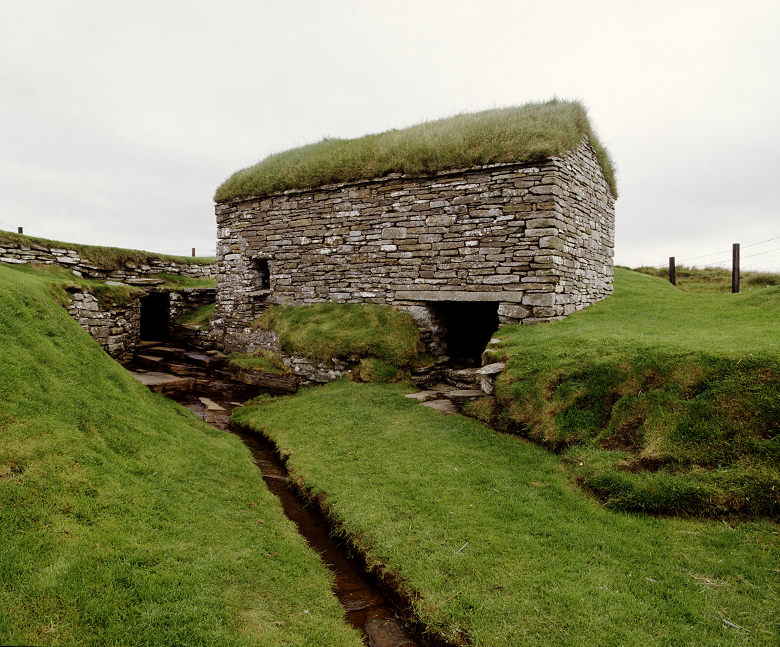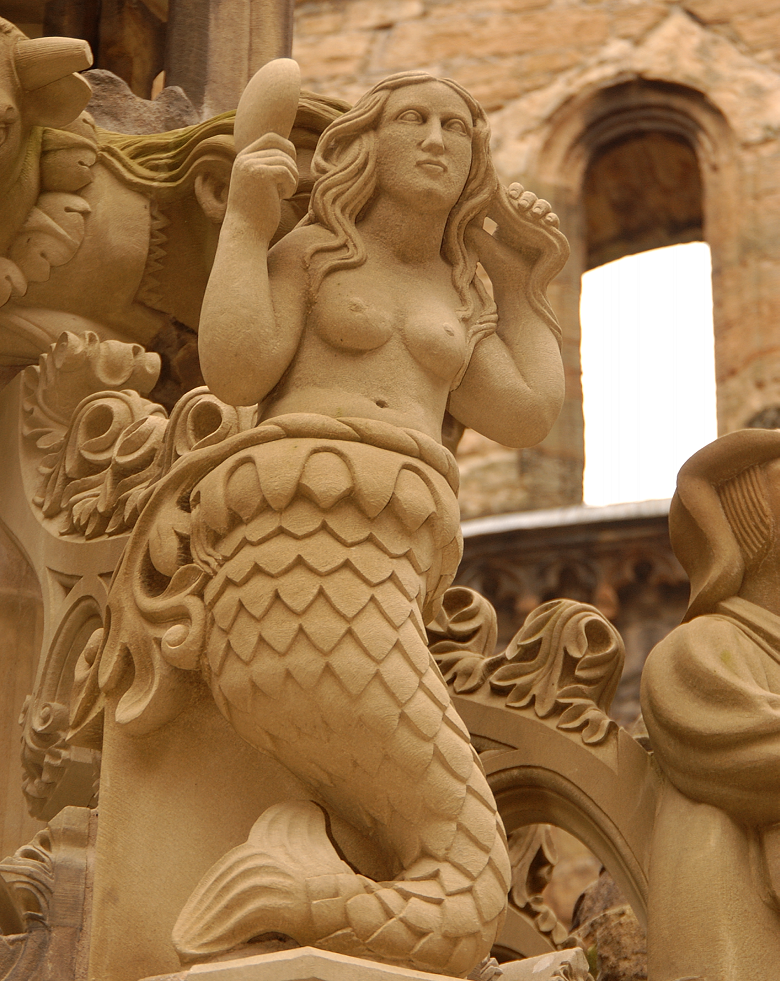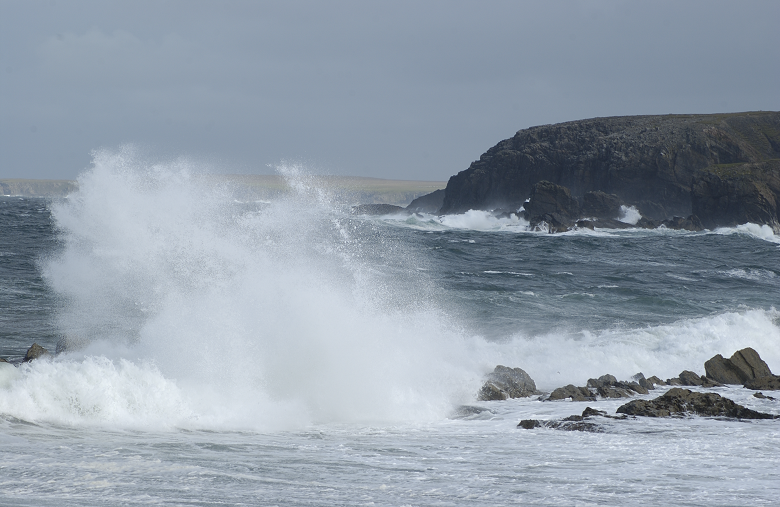There are many supernatural creatures to be found in Scottish folklore. This Halloween, we’d like to introduce you to a few of our favourites and let you hear the stories told by people around Scotland.
The Mythical Scottish Water Horse
The kelpie is a water spirit which often takes the form of a horse and is found in lochs, pools and rivers. There are many bodies of water in Scotland which have stories about kelpies associated with them. The kelpie appeared tame on land but if anyone sat on its back, it would gallop into the water and the unfortunate victim would never be seen again.

Bodies of water, like Loch Awe, are said to be the perfect habitat for kelpies.
The kelpie could also take human form, usually that of a handsome man, who would attract and seduce young girls. Their identity could be betrayed by the presence of sand or water weeds in their hair, or hooves on their feet. However, this was often only discovered once it was too late!
In the song ‘A Ghaoil Leig Dhachaigh gu Mo Mhàthair Mi’, the girl appeals to the kelpie (‘each-uisge’ in Scottish Gaelic) to let her go home to her mother. It is sung here by Kate Nicolson from the island of South Uist.
‘A Ghaoil Leig Dhachaigh gu Mo Mhàthair Mi’- Kate Nicolson
In this story a young Traveller boy meets a man who is fishing on the other side of the river. The man tricks him into deep water and the boy sees that the man has cloven feet. He realises the man is actually a kelpie, this time taking the form of half man and half horse. The boy runs for his life and later learns that many people have previously drowned at that spot. The story is told by Stanley Robertson, a renowned storyteller and singer from Aberdeen.
Story about a water kelpie- Stanley Robertson
The belief in kelpies performed a useful function in deterring children from going near dangerous stretches of water. It also served as a warning to young women to keep away from handsome strangers!
Don’t Annoy the Brownies
There are various descriptions of creatures known as brownies. Generally, they are depicted as small creatures, usually male, with reddish brown hair. They are shy creatures who like to remain unseen and who help with household and farming tasks at night, while their human counterparts are asleep. Traditionally they receive small gifts of food in exchange for their labours and will abandon a dwelling if these offerings are referred to as payments, or if anyone in the household mistreats them. Brownies prefer to live in unused parts of a building, such as an attic.

As far as we know, there have been no sightings of brownies at Click Mill on Orkney…
This story tells of an elderly miller who is no longer able to carry on working and cannot afford to take on a young man to help. He is worried that he will have to give up the business but when he wakes one morning he finds all the work has been done. One night he hides behind some sacks to find out the identity of his helper and sees that it is a small group of brownies. The miller and his wife decide they should give the brownies some food as they are working so hard. But when they leave out bread and cheese, the brownies leave, saying, “He’s paid me off,” and never come back. The story is told by Bryce Whyte and in his version he states that the brownies did not like to receive any payment at all, not even food.
Story about brownies helping in a mill- Bryce Whyte
Less Ariel, More Ursula…
The mermaid is a legendary sea creature with the head and upper body of a female human and the tail of a fish. Mermaids commonly appear in Scottish folklore as unlucky omens, sometimes provoking disaster and sometimes predicting it. This is in sharp contrast to modern myths, in which they are depicted as being kind and benevolent to humans.

Could the mermaid on the Linlithgow fountain be hiding a deceitful streak?
Roderick MacKinnon from South Uist tells a story about the crew of a fishing boat who see a mermaid. There was a tradition that if a mermaid was seen, then everyone on board had to throw something to her. The skipper puts his hands in his pockets but only has a knife. He throws this to her, she catches it, and then disappears. This is a sign that the skipper is to drown but nobody wants to tell him this. He and another man drown the following spring.
Story about an encounter with a mermaid- Roderick MacKinnon
Ch-ch-ch-ch-Changelings
A changeling child was believed to be a fairy child or elderly fairy who had been left by fairies in place of a human child. The human child would then be brought up by the fairies. Children were believed to be more susceptible to being stolen prior to being baptised.
There are different theories as to why a human child might be taken. Some believed that it was to exchange a sickly or unattractive fairy child for a healthy, beautiful human child. Others thought that it was out of spite, or that the child would be taken to work as a servant. There was also a theory that fairies believed it was more respectable for fairy children to be raised by humans. In the case of elderly fairies being swapped, it was thought that they would be able to live in comfort, cherished by their human parents.
Incessant crying, constant feeding or eating vast amounts of food, or the ability to speak at a very young age were all signs that a child could be a changeling.
There were various ways of exposing a changeling and getting one’s own child back. One method was to expose the changeling to fire. The child would be held closely in front of the fire or suspended in a basket over it. If it was a changeling it would make its way up the chimney, sometimes hurling insults as it disappeared. Other methods included threatening to expose it to water or to telling it that the fairy hill was on fire.

In this story a women’s child is taken by the fairies and is replaced with a changeling. The child eats constantly and this arouses the woman’s suspicions. One day she pretends to leave the house but secretly watches through the window. The child begins to play the chanter and she realises he is in fact a changeling. She is advised by an old man to take the child to the shore and leave him on a rock as the tide comes in. The changeling takes on his real form – an old fairy man! The woman refuses to rescue him until she gets her own child back. The story is told by Nan MacKinnon from the island of Vatersay.
Story about child taken by the fairies- Nan MacKinnon
In this story from the Shetland Islands, Brucie Henderson tells of a man who is working in a peat bank when a boy, aged about eight and covered in hair, jumps out of a crack in the ground. The man offers to feed the boy, who replies that he eats heather and the black bull’s bladder. The man takes him home and the boy threatens to blow like the north wind and blow down the house if they do not release him at once. They realise he is a fairy changeling.
Story about a fairy changeling found in peat bank- Brucie Henderson
 This blog was written by Elsie Maclean. Elsie is the marketing officer for Tobar an Dualchais/Kist o Riches and has worked with the project since 2007. Tobar an Dualchais/Kist o Riches is a collaborative project which has been set up to preserve, digitise, catalogue and make available online several thousand hours of Gaelic and Scots recordings.
This blog was written by Elsie Maclean. Elsie is the marketing officer for Tobar an Dualchais/Kist o Riches and has worked with the project since 2007. Tobar an Dualchais/Kist o Riches is a collaborative project which has been set up to preserve, digitise, catalogue and make available online several thousand hours of Gaelic and Scots recordings.

